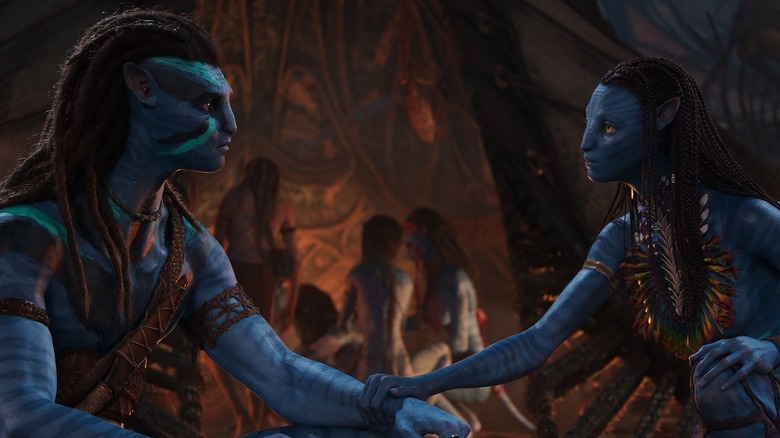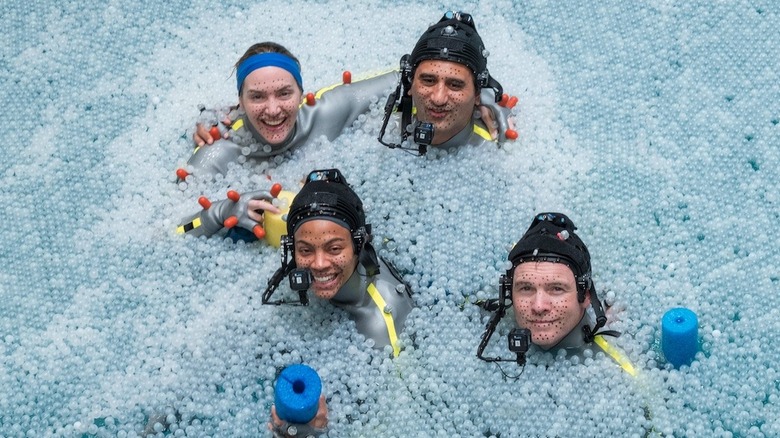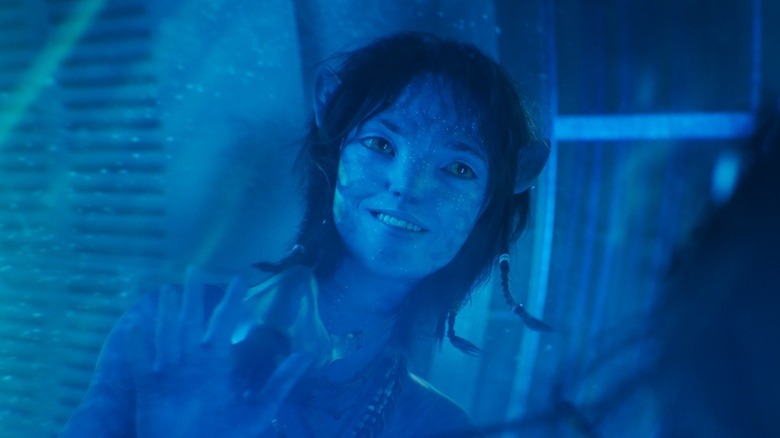How Facial Muscles Played A Key Role In Avatar: The Way Of Water's Visual Effects
"Avatar: The Way of Water" is out in theaters after a wait of almost a decade and a half. That's a very long time in terms of VFX technology. Looking back at the original film, which was a technical marvel at the time, you can see how far we've come. "The Way of Water" has far more characters than the original film, plus new creatures, all of whom need to emote effectively on film. Very few of the characters in the sequel are human, meaning the crew used motion capture to record their performances. Then the VFX house has to take those performances and render them into the faces of the Na'vi.
There is so much subtle nuance in facial movement. Even though audiences might not know precisely why, we can tell when something is off. That's all changing over at Wētā, the company behind the effects in films like "The Lord of the Rings" trilogies and pretty much every other effects-heavy film you love. /Film recently attended a panel with the team, moderated by "Avatar: The Way of Water" producer Jon Landau. During the event, Dan Barrett, senior animation supervisor, spoke about how they've improved upon the facial expressions of the actors and how they've updated their technology.
'Every animator loves a creature'
Landau mentioned that there were really only two main CG characters in the first film that the team had to concentrate on. Here, they have a lot more, as well as animals who have to emote without human speech. Barrett said that it was a "real challenge" and that they went back to look a the first film and "identified some things that we wanted to try and push to see if we could do better." He explains:
"We developed a new facial system for doing that. I think that really helped in bringing those performances through, and then a really talented team, including Richie [Baneham -- VFX supervisor for Lightstorm] here, just pouring over these performances, making sure that we could bring it all through. So, a great challenge. Lots of creatures, new creatures. Every animator loves a creature."
The whale-like creatures called the tulkun in the film are a big part of the heart of the story, so creatures do play a major role. Of course, in the end, it's the actors who are the main characters, and since we know what human faces look like when they emote, that's much harder to get right. If you don't believe an emotion, the story falls flat, so getting this right matters.
' ... a very, very accurate way of bringing all of that fidelity through'
Barrett said the old system they used for facial expressions focused more on the surface of the face, and though the muscles were considered, it was "kind of a combination of muscles." They hadn't really taken apart the muscles of the face to see what they did. He says:
"[There are] 170 odd muscle strains within the face — [we] essentially pulled them off the surface so we could understand exactly what the muscles were doing. And we had detailed actor puppets so we could see what the actor looked like in a 3D space once we had the performance, and then transferred those across.
"I think what we saw with this film was just this sort of more plausible anatomical look. Whereas previously, it was very easy for an animator to break things a little bit. To take things a little bit too far. And this was a very, very accurate way of bringing all of that fidelity through from the actors, and a very handy tool for making sure that our measures didn't go too far, didn't take the characters off model."
It's clear from this film that the facial muscles were involved. It was hard to tell the difference between the facial expressions of the human characters like Spider (Jack Champion), even when they're speaking directly to a Na'vi like Kiri (Sigourney Weaver) in the same shot.
Facial expressions are complex, and we stare at people's faces daily in real life. On the big screen, we see them up close and far larger than any actual person. That means that every twitch, every nuance of expression is up there — in 3D — to judge and evaluate. It's fascinating, and it's getting really close to the real thing.
"Avatar: The Way of Water" is in theaters now.


